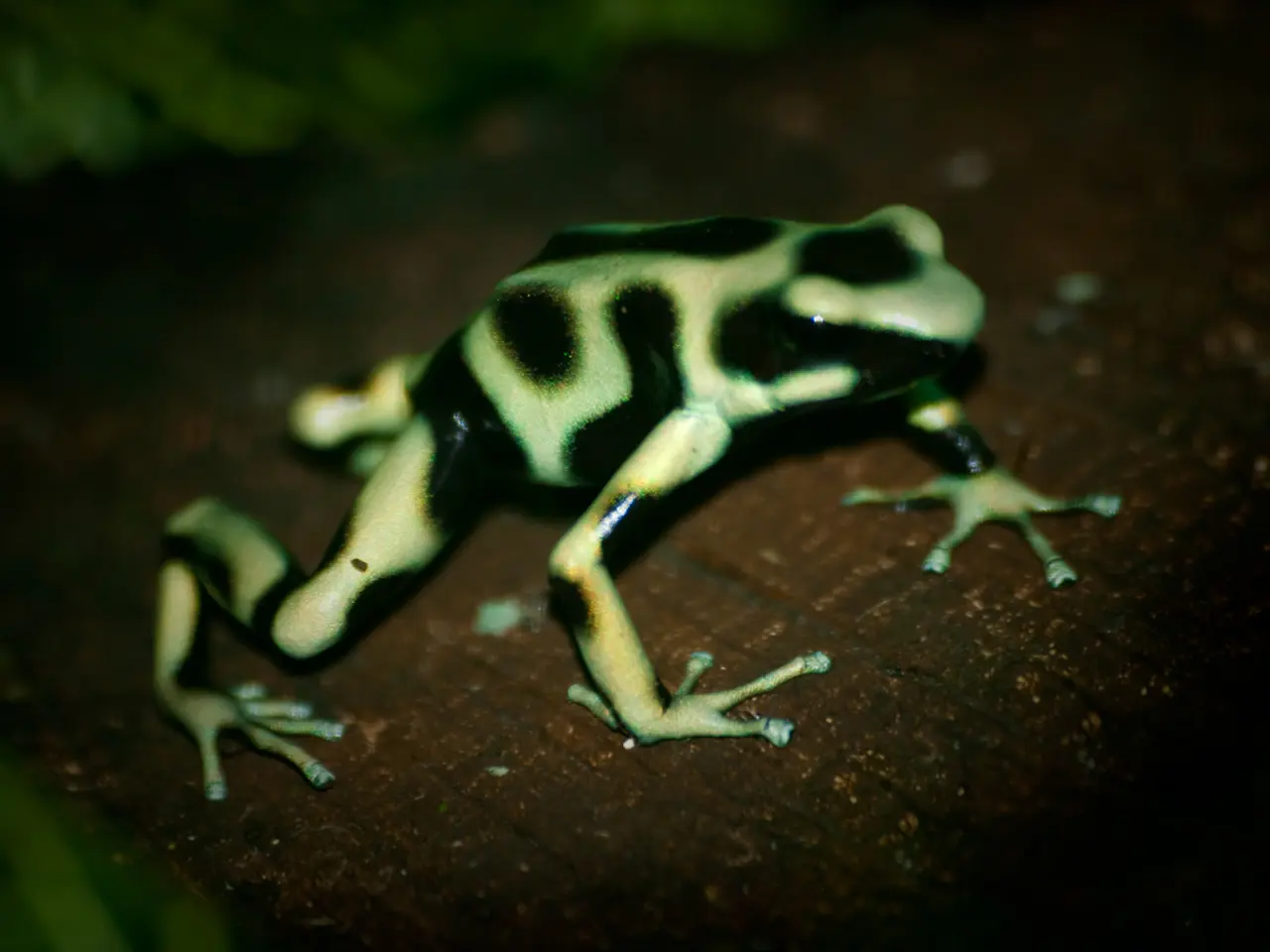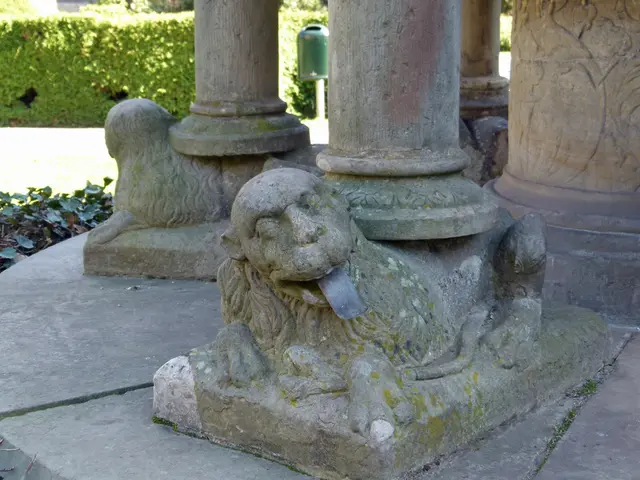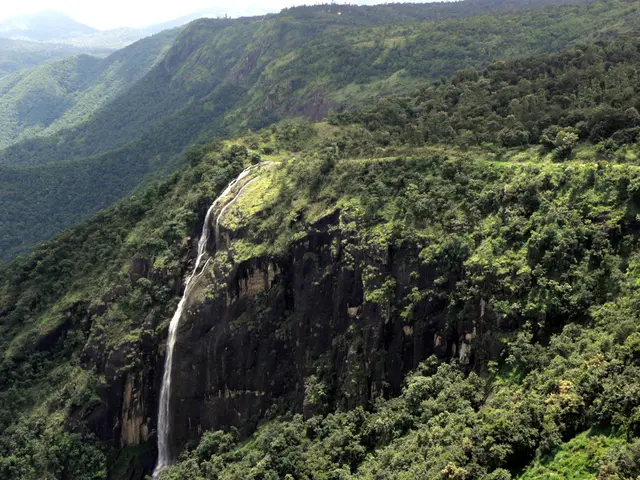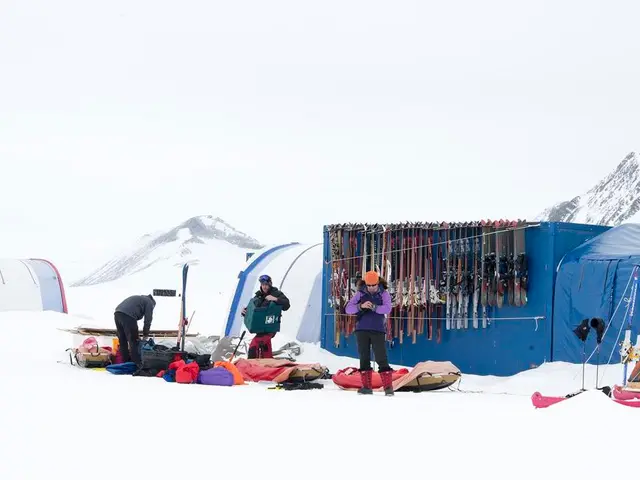Exploring the Rainforests of Borneo: A Pursuit for Rare Frog Species by Tourists
In the heart of Borneo, the Kubah National Park, particularly around Kuching, has emerged as a hotspot for studying various frog species. This humid Bornean rainforest, located about half an hour's drive from Kuching, is a popular destination for herpetologists due to its abundance of frog species.
A group of trekkers, including British tourist Lauren Heywood, are navigating through this jungle, using torches to scan the dense foliage. During one such trek, Lauren spotted a large frog with reflective eyes, a sight that left a significant impression.
Herpetologists find Kubah National Park to be an ideal location for studying various frog species due to its unique environment. The park is renowned among them for its impressive diversity, hosting over 60 distinct types, many of which are unique and remarkable in various ways.
One such unique species is the Pinkish Harlequin Flying Frogs, noted for their vibrant coloration and ability to glide using their webbed feet. Another is the File-eared Tree Frogs, characterized by their sharp noses and "file-like" ear structures. White-lipped Frogs, with their striking lurid green backs contrasted with a white stripe along the bottom jawline, are also commonly found.
The Matang Narrow-mouthed Frog, discovered only recently and officially described in 2010, is one of the world's smallest frogs, not exceeding 11 millimeters in length. It was found specifically in Kubah, underscoring the park's role in harboring tiny and rare species.
One of the world's smallest frog species that breed inside pitcher plants can also be found in Kubah National Park. This unusual reproductive behavior makes this tiny frog species particularly fascinating and highlights Kubah’s ecological diversity.
While the park does not have some of Borneo's most famous large frogs like the giant river toad, its array of more delicate and small-sized frogs, some breeding in specialized habitats like pitcher plants, offers a unique frogging experience for visitors and researchers alike.
Kubah National Park stands out as a hotspot for amphibian enthusiasts, featuring a rich variety of unique and specialized frog species that are rarely found elsewhere on Borneo. Despite the challenges of trekking through a rainforest teeming with fire ants, snakes, and millions of nighttime creepy-crawlies, the allure of discovering these unlikely stars of the forest continues to draw explorers to this captivating destination.
[1] Source: https://www.nature.com/articles/s41598-019-41467-3 [2] Source: https://www.nature.com/articles/s41598-019-41467-3 [3] Source: https://www.nature.com/articles/s41598-019-41467-3 [4] Source: https://www.nature.com/articles/s41598-019-41467-3
- Lauren Heywood, the British tourist, discovered that the diverse environment of Kubah National Park is not only ideal for studying various frog species but also offers unique wildlife experiences, as she encountered a large, glowing-eyed frog during her trek.
- Kubah National Park, a hotspot for amphibian enthusiasts, not only hosts over 60 distinct frog species but also boasts of some rare and specialized ones like the Matang Narrow-mouthed Frog and the frog species that breed inside pitcher plants, making it a captivating destination for travelers seeking a one-of-a-kind frogging experience.




